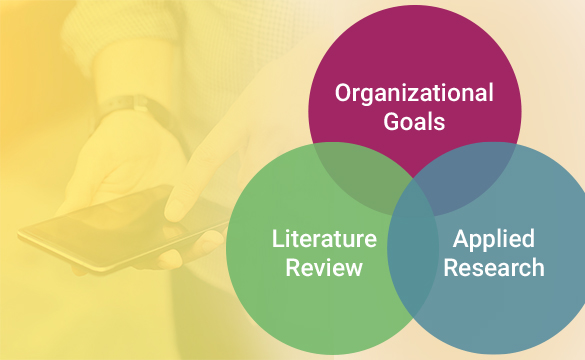
Can We Avoid Burnout?
We often use the term “burnout” as a vague label for an exhausting day or week of hard work, but actual burnout is more than

If the answer is ‘no’, read on.
The fact is that most public education campaigns fail to deliver on the ultimate objective: effecting behaviour change. That’s because most campaigns are designed to reach as many people as possible – an admirable goal, but not an effective strategy. The hard truth is: when you try to appeal to everyone, you generally appeal to no one.
We’ll say it again: When you design a campaign for everyone, you design for no one.
It may seem counterintuitive, but when you identify a single key audience and narrow your focus to specifically serve their needs, your efforts gain momentum and your results grow.
The key to creating public education campaigns that deliver behaviour-changing results starts before you develop the campaign with a scientific discovery process that involves forming a hypothesis that supports your organizational goals. Then you conduct research to pinpoint and define a specific user group or target audience as a focus for your campaign. You want to fully understand who the people in this group are, how they prefer to engage with you and how they learn.
By using a variety of applied social scientific methods like interviews, focus groups and workshops, as well as literature reviews of relevant areas of knowledge, you can gain deep insight into your stakeholders’ motivations, emotional experiences, and learning preferences. This process will illuminate your target audience’s information-seeking behaviour, their aesthetic preferences, preferred access technologies and social media habits. Competitive analyses can be conducted to learn from related programs about what works well.
All these insights are used to precisely tune your outreach efforts to address your target audience’s challenges, goals and educational needs. In this way, the voices of your constituents become the heartbeat of your programs. You are also able to identify unifying principles and ideas for designing an ecosystem of program assets to reach this group and beyond. And when you add in data collection and measurement techniques, you’ll have all the elements of a powerful public education campaign that delivers real, sustained results.
In this way you’ll dramatically increase the probability that your highest priority audience members will get something valuable from your research, and other people will still see value in too.
Also see: Beyond Reports: Moving From Awarenes to Behaviour Change.
About Dialectic
Dialectic believes that design is a collaboration that fuses analytical and creative strengths with deep domain knowledge, to produce communications that connect. Contact us for more information on how to create public education campaigns that drive sustained behaviour-change results.

We often use the term “burnout” as a vague label for an exhausting day or week of hard work, but actual burnout is more than

At Dialectic, we think a lot about DEI, soft skills, and leadership training that makes organizations more inclusive and human-friendly. When we team up with

Ageism commonly affects women over 40 in the workplace. In spite of their tremendous wisdom and experience, women over 40 may be passed over for
Dialectic helps organizations improve the way people work, learn, and collaborate through person-centred design and the latest in social science.

Does your team struggle with soft skills?
Use our app or upload Snippets to your LMS to build better habits in minutes with scenario-based microlearning.
Sign up for our weekly roundup of the latest on DEI, leadership, collaboration, and learning science.
© 2024 Dialectic. All rights reserved. | Contact Us | Privacy Policy | Terms of Use | AODA Statement
See how easy it is to activate soft skills in your organization. Soft skills training on 3 key topics: DEI, Leadership, and Collaboration.